

Motenas Japan conducted a survey of about 500 foreigners about traditional Japanese culture. What kind of traditional culture is popular among foreigners? What kind of places are foreigners interested in? These were the results of the survey.
Please use this information as a reference for those who want to invite foreigners to Japan or when entertaining foreigners. With this knowledge, you will be sure to please and satisfy foreigners visiting Japan.
Survey Summary and Respondents

The following is a summary of this survey and information on its implementation.
Title: Questionnaire on experiences when traveling to Japan
Survey method: Internet survey
Respondents: 507 (383 males, 123 females, 1 non-respondent)
Respondents by nationality: 497 from the U.S. 3 each from Canada, India, and the U.K., 1 from France
Ranking of Popular Japanese Traditional Culture

In a survey answered by about 500 foreigners, we asked them about traditional culture they would like to experience in Japan. The results show what kind of traditional culture foreigners are interested in. The results are shown in the graph below.
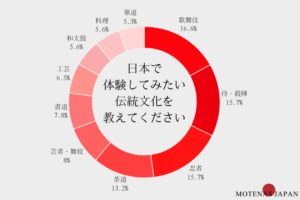
Kabuki” was selected by 16% of foreigners, showing its popularity, followed by traditional culture such as samurai and ninja in second place, clearly indicating that these are recognized as entertainment.
There are some traditional cultures that even Japanese people do not understand very well. Please take this opportunity to learn about its history and contents.
1st Kabuki
Kabuki is the number one traditional culture to experience in Japan. Kabuki has its roots in the “Kabuki Dance” that began in Izumo no Okuni in 1603 and has a history spanning 400 years.
The word “kabuki” is derived from “kabuku,” meaning to dress or act strangely, and kabuki is considered to be an act or dance that is not influenced by existing dress or customs, but rather incorporates trends and entertains people. This historical background is one of the reasons why foreigners find Kabuki so interesting.
Kabuki has been performed mainly at the National Theatre, which is currently closed for renovation. Even though the theater is closed, kabuki performances continue to be held at small theaters around Japan, and can be seen at the Kabuki-za Theater. The Kabuki-za has a wonderful exterior and is sure to be appreciated by foreigners.
No.2 Samurai/Killer
The second most popular traditional culture that foreigners would like to experience in Japan is “Samurai/Killer”, selected by 13.2% of respondents, although as a Japanese, I must admit that it does not ring a bell.
Wearing armor and mastering swordsmanship to protect their lord or themselves is very attractive to foreigners. The sword fighting performances in the movies “The Last Samurai,” “Kill Bill,” and “Seven Samurai” were very powerful even for Japanese people, and we can assume that many foreigners felt the coolness of Samurai through movies and animations.
The movie village and iaido classes offer hands-on courses for foreigners, so even visitors to Japan can casually experience samurai and sword fighting.
3rd Ninja
How much do we Japanese know about the ninja?
Dressed in black, ninja have a mysterious atmosphere of living with darkness, which is one of the reasons why they are so popular among foreigners.
Many foreigners want to experience the real-life ninja from the Muromachi to Edo periods, and like the samurai, it is believed to have been popularized by movies and anime.
In Iga City, Mie Prefecture, there is the “Iga School Ninja Museum,” a museum where visitors can enjoy hands-on experiences in addition to the exhibits, which will be appreciated when introduced to foreign visitors.
4th Tea ceremony
The fourth most popular activity was the tea ceremony, with 11% of foreigners saying they would like to experience it. The sight of people wearing kimonos and making tea is probably the very image of the Japanese people.
Sen no Rikyu created the prototype for today’s tea ceremony, which is now divided into its own schools, but the principle of treating guests with respect remains the same, and the tea ceremony cultivates this spirit.
There are also classes where you can experience the tea ceremony in about an hour, so why not use it to entertain foreigners?
No. 5 Geisha and Maiko
The fifth most popular traditional culture that foreigners want to experience is geisha and maiko. Geisha and maiko are very popular among tourists because they are beautiful and photogenic in appearance alone.
Its history dates back to the Edo period. In Yoshiwara, there was a division between prostitutes who sold sex and geisha who sold art, and it is said that their heyday was around the early Showa period.
To see geisha dance is, in other words, to appreciate “Japanese dance. In addition, many geisha are all-rounders who can also sing, drum, play the shamisen, and play the koto, so even first-time visitors to Japan should be able to fully enjoy Japanese culture by watching geisha and maiko.
6th Calligraphy
Calligraphy, ranked 6th, is believed to have come to Japan during the Kofun and Asuka periods of the 6th and 7th centuries. Its history began when Buddhism was introduced to Japan and people began to copy sutras. Since then, it has made history and now its popularity has spread even further with high school students performing calligraphy to songs.
Wearing furisode (long-sleeved kimono) and writing letters with a brush on a wall of Japanese paper, the letters spread out to the sound of the shamisen, attracting not only foreigners but also Japanese people.
7th Crafts
Crafts, ranked seventh, refers to a wide range of Japanese manufacturing. For example, indigo dyeing and kintsugi are traditional Japanese crafts that are unique to Japan. Other popular examples include ceramics and kokeshi doll painting. The unique Japanese culture of taking good care of things is popular among foreigners, and the customs themselves are interesting.
Many of them can be experienced casually, but reservations are required in advance, so it is best to check with them to ensure a smooth experience.
No. 8 Japanese drums
The dynamic and powerful taiko is another traditional culture that is popular among foreigners. Taiko is a traditional Japanese drumming performance that requires the full force of the body to beat a rhythm, and can be enjoyed by one or more people. Just watching the performance is overwhelmingly powerful, and beating the drum with a bachi refreshes the body and mind.
You can experience taiko by booking a trial course at an event or at a taiko school. The whole family can join in the taiko drumming experience, which will be a great memory for foreign visitors to Japan.
9th Cooking
Japanese food is becoming popular among foreigners because of its delicacy and visual beauty. Kaiseki cuisine and Japanese sweets are delicious to eat, and you will feel as if you are looking at a work of art.
If you just want to eat, a visit to a Japanese restaurant will suffice, but if you are a foreigner who wants to experience Japanese food during your visit to Japan, we recommend that you take advantage of a hands-on course at a Japanese food school.
You will be able to learn how to make the dish and how it came to be, and explore Japanese culture.
10th Flower arrangement
Flower arrangement is another traditional culture that you should experience when you come to Japan. It expresses the unique wabi-sabi of Japan and creates an atmosphere different from that of flower arrangements overseas.
The beauty of arranging flowers in a kimono can be seen in the finished product, which can be admired as a work of art that adds color to a Japanese space. The work you create with the instructor while learning the techniques will remain in your memory for a lifetime.
extra (special) edition
Other traditional cultures that did not make the top 10 are also introduced here.
Dressing
Karate
match that determines if a rikishi will have more wins than losses
Judo
Kimono dressing refers to the process of properly putting on a kimono, a uniquely Japanese garment that has been worn since the Jomon period and is popular even among foreigners. A neatly fitted kimono will straighten your body and mind, and you will naturally stand up straight.
In addition, karate and judo are well known abroad as Olympic sports, and sumo is considered Japan’s national sport. Sumo is the oldest sport in Japan and was once practiced as a Shinto ritual.
All of them are well known by foreigners, and can be considered traditional Japanese culture that can be enjoyed casually because they can be experienced by spectators.
Places where foreigners want to experience traditional culture
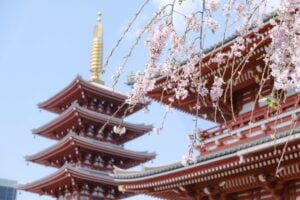
In what kinds of places do foreigners want to experience traditional culture?
The answers to the question about where they would like to experience traditional Japanese culture are as follows.

Historical buildings and temples ranked first among the places they would like to experience. Foreigners are also interested in historical buildings that are unique to Japan, and their architecture and history are interesting from a foreign perspective. Modern urban areas and Japanese houses followed.
We will explain exactly what kind of place it is.
In historic buildings and temples
About 17% of foreigners chose to visit a historical building or temple. This result proves that temples, shrines, and buildings with a long history are attractive to foreigners.
Specifically, temples, shrines, Buddhist temples, castles, samurai residences, private homes and town houses can be considered historical buildings. Experiencing traditional culture in a building that offers a glimpse of Japan’s history and its way of life is like stepping back in time to that era. It will surely be a good memory for foreign visitors to Japan.
Contemporary urban area
Urban areas refer to city centers, where accommodations are concentrated and transportation is convenient, and are popular among foreigners.
Traditional culture can also be experienced in these urban areas. Asakusa, Kyoto, and Kanazawa are good examples, where visitors can enjoy tea ceremony, flower arrangement, and rickshaw rides. Many of the old buildings are still standing, and their easy accessibility makes them one of the areas that foreign visitors to Japan enjoy.
Traditional Japanese houses and inns
Traditional Japanese houses and ryokan (traditional Japanese inns) are among the places to experience traditional culture. In Japan, where modern housing is on the rise, traditional Japanese houses and traditional ryokan are rare.
Spending time in a tatami room or under the eaves of the roof provides an unforgettable experience, and experiencing traditional culture is sure to please even more.
Some Japanese houses have been renovated and are available for rent. There are also a few old ryokan (traditional Japanese inns) that have retained their original appearance, making them ideal places to enjoy traditional culture.
Seaside and resort areas
Seaside and resort areas are also chosen as places to experience traditional culture. In resort areas, there are many facilities and museums where you can experience traditional culture, making them ideal for foreigners who want to experience it while sightseeing.
History shows that cities often develop and cultures are built from seaside ports, and the seaside area is also a great place to experience the traditional culture rooted in the area.
Mountainous and nature-rich areas
Mountainous areas and areas rich in nature were also popular as places to experience traditional culture. Since entire towns in mountainous areas are often undeveloped and lined with Japanese houses and old ryokan (traditional Japanese inns), there is probably a direct connection to traditional culture.
There are still many areas in Japan that are rich in nature. 75% of the country is said to be mountainous, including volcanoes. This topography is also unique to Japan, and you will be able to fully enjoy Japanese nature with its hot springs and beautiful mountains.
What foreigners want to experience in Japan

In this survey, respondents were asked to respond to free-text questions about what they would like to experience in Japan. The most common words were traditional, architecture, and skyscrapers.
Unlike the selective responses, the survey gave us a good idea of what we really wanted to experience in Japan.
Here is a sampling of some of the responses.
Female, 30s, Nationality: American
Ancient temples, futuristic skyscrapers, tea ceremonies, fancy video game arcades, relaxing hot springs and go-karts for cosplay.
They commented that they wanted to enjoy traditional culture in a quiet environment and modern Japan, with its historical buildings and skyscrapers that symbolize the future, tea ceremonies and glittering game centers in a quiet environment.
This comment reminds us that the quiet enjoyment of traditional culture and present-day Japan in urban areas are diametrically opposed.
Male, 30s, Nationality: American
I want to drink and eat at izakaya, soak in soothing hot springs, and explore art and architecture on an island of art.
A night of luxury at a luxury hotel in Tokyo. I would like to attend a Japanese festival.
Taste the world’s finest sushi and sashimi. I want to ride the Shinkansen around Japan.
This is a comment from someone who knows a lot about daily life in Japan. Izakaya is a unique Japanese style of eating and drinking, popular among foreigners for its good taste and lively atmosphere.
And the Shinkansen, also known as a comfortable vehicle, is one of the safest and most comfortable vehicles in Japan, having never had a fatal accident in the past. This comment shows how foreigners view Japan.
Male, 30s, Nationality: American
I love Japanese karaoke, much more than the western version where one person sings in front of everyone. In classic Japanese-style karaoke, you go into a private room with your friends.
This is a comment from the U.S. about how much they like Japanese karaoke. Karaoke is a culture born in Japan and has undergone many changes in different countries and regions since it was exported overseas.
In the U.S., people sing on stage, while in the EU, the most common style is to sing in public in pubs and bars. There are differences between Japanese and foreign karaoke cultures, and singing in private rooms is unique to Japan.
∙ Female, 20s, Nationality: American
Japanese architecture, arts, traditions, and crafts. Also, the world-renowned pop culture (manga, anime, video games, etc.). It is without a doubt something that only Japan can offer. No other country has the same characteristics.
The survey revealed that a great number of foreigners wanted to experience historical buildings, arts and crafts. Modern pop culture, such as manga and anime, is another aspect of Japanese culture that is popular among foreigners. No other country can boast such a diverse culture.
Information sources that foreigners refer to when visiting Japan

From where do foreign visitors to Japan refer to information? Finally, in this survey, we asked about the sources of information they refer to when planning their trips and experiences.
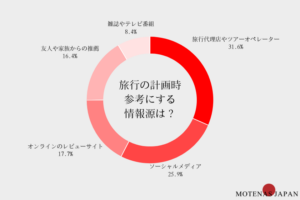
The most referenced source of information was from travel agents and tour coordinators. While it was found to be such a strongly trusted source of information, it was closely followed by social media in second place.
In today’s world where individuals can disseminate a variety of information, many people plan their trips based on social media. Photojournalistic sights and experiences are all by themselves eye-catching.
The use of social media is essential for Japan’s tourism industry, which wants to attract foreign visitors to Japan.
Summary
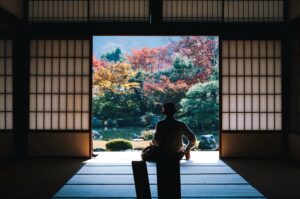
In this issue, titled “Traditional Japanese Culture Rankings by Foreigners,” we have explained popular traditional cultures and places they would like to experience based on a survey we conducted.
This survey allowed us to learn about the traditional culture that foreigners really want to experience, and we felt that we should further disseminate traditional culture that foreigners are interested in and convey its advantages to them.
If you are a foreigner who would like to experience traditional Japanese culture, please contact us at Motenas Japan. We will assist you with experience plans and suggestions for your visit to Japan.
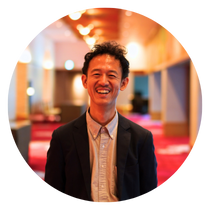
30s male writer. He has worked in a hotel for 16 years and is involved in the travel industry. Through his work at travel agencies and hotels, he developed an interest in travel and often goes on trips. His favorite cities are Sendai and Hakata. He conveys the knowledge he has gained through his travels and the charms of Japan with care.





